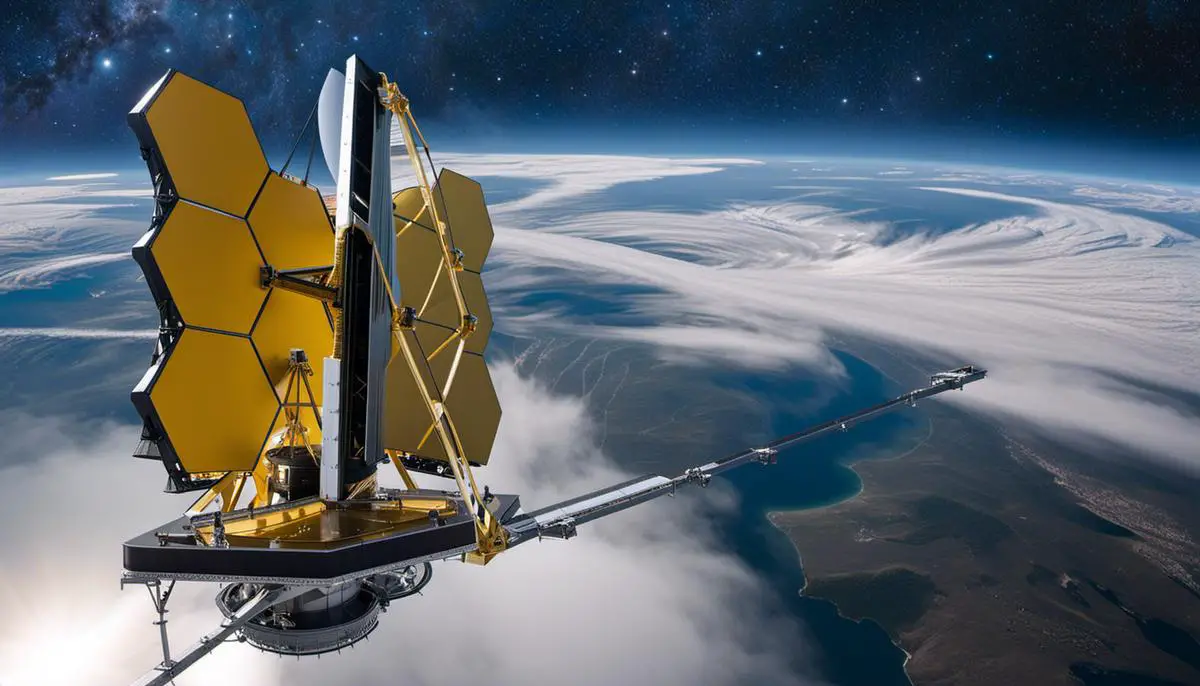The future of space exploration touches on dreams and realities that are infinitely intertwined. This is especially true with respect to the James Webb Space Telescope (JWST), slated for its long-awaited launch in 2021, as a unique technological marvel eclipsing its sister telescope, the Hubble. What makes the JWST remarkable is more than simply its potential to glimpse into far-flung galaxies or its projected mission to illuminate the darkest mysteries of the universe. Rather, it is the consequential influence that this observatory might generate, shaping our understanding of astronomy as we know it. This forward-looking endeavour is a continuation of humanity’s age-old quest to wrestle with the cosmic unknown, demonstrating not only our technical prowess but also our innate curiosity.
Overview of James Webb Space Telescope
The James Webb Space Telescope – A New Era of Exploration
The James Webb Space Telescope (JWST) is a large, space-based observatory led by NASA in partnership with the European Space Agency and the Canadian Space Agency. Poised to launch in 2021, this next generation space telescope aims to revolutionize our understanding of the universe by serving as the premier space observatory for the next decade.
Astounding in its ingenuity and engineering, JWST promises to escalate space exploration to new heights. The telescope is designed with a primary mirror that measures a staggering 6.5 meters in diameter as compared to the Hubble’s 2.4-meter mirror. Due to its significantly larger size, JWST will have over 2.5 times the light-collecting area of Hubble, enhancing its capacity to observe the farthest and oldest galaxies ever detected.
Outfitted with an array of sophisticated scientific instruments, JWST will delve deeper into the mysteries of the universe. It’s destined to study everything from the formation of stars and planets, the evolution of galaxies, to the boundary lines of our own solar system, and the potential for life beyond it.
Unique Capabilities of JWST
Set to surpass its predecessor, JWST comes equipped with unique capabilities positioning it as a complement, rather than a replacement, to Hubble. Unlike Hubble, which observes in ultraviolet, visible, and near-infrared light, JWST will primarily view the universe in infrared. This will allow it to pierce through dust clouds and unveil stars and planetary systems in the earliest stages of their formation – a realm of space exploration that has, until now, remained relatively uncharted.
Moreover, JWST’s position outside the Earth’s atmosphere will limit interference from our planet’s own infrared emissions, offering its instruments a clear view of the universe. This makes it particularly well equipped to study phenomena like the cosmic microwave background radiation, offering new insights into the very early history of the universe.
Introduction to the James Webb Space Telescope
Equipped with groundbreaking features, the James Webb Space Telescope (JWST) is a marvel of modern engineering and an ambitious stride in the journey of space exploration. One such feature includes a tennis court-sized sunshield designed to keep its mirror and instruments cool, shielding them from the intense heat of the sun.
Although larger in size than the 11,110-kilogram Hubble Space Telescope, the JWST only weighs just over 6,200 kilograms thanks to advanced materials and technological innovations. Once launched and fully extended, it will take a position approximately 1.5 million kilometers from Earth, at the second Lagrange point – a spot that ensures a stable alignment with Earth while orbiting the sun.
The JWST is not just meant for observing the universe; it aims to redefine our understanding of it. The upcoming year teems with exciting potential, with this advanced observatory all set to lead us into the thrilling future of space science.
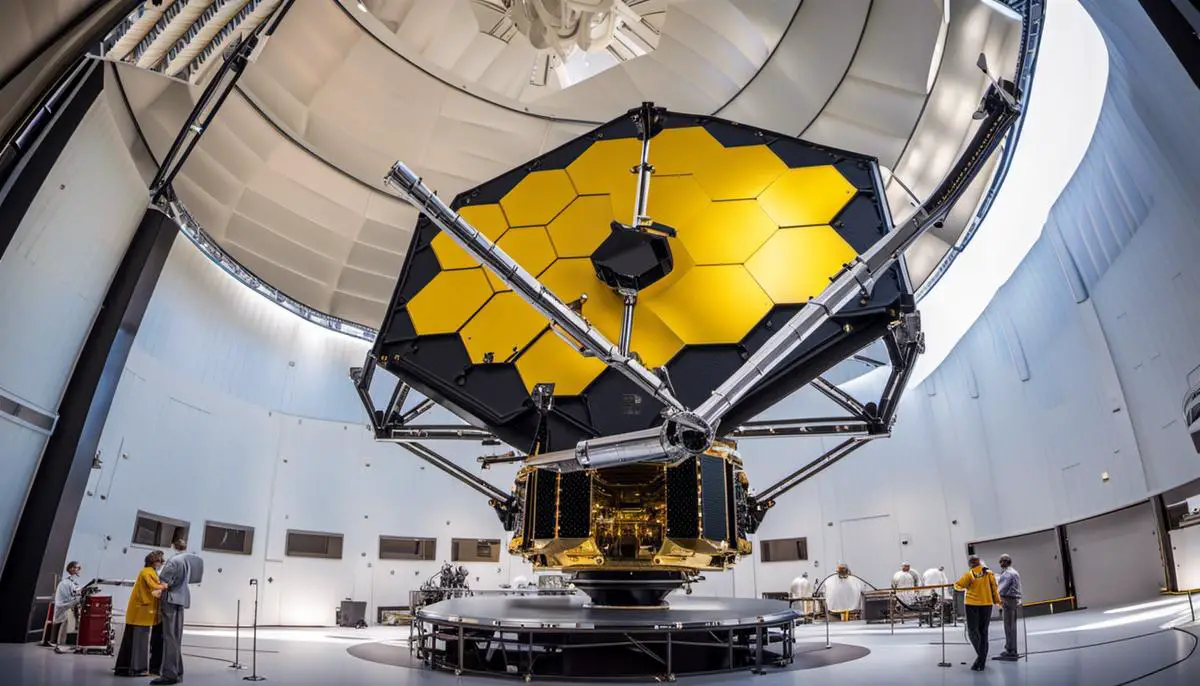
James Webb’s Mission and Expectations
Building Upon Hubble’s Legacy: The James Webb Space Telescope
Scheduled to launch in late 2021, the JWST stands as a testament to technological evolution. Outfitting a larger and more powerful mirror than its predecessor, the revered Hubble Space Telescope, it is finely poised to delve even further into the cosmic frontier. Capable of capturing light from the first galaxies that emerged after the Big Bang over 13 billion years ago, the JWST is a gateway to the early universe.
However, it’s not confined to the ancient cosmos. The JWST is also set to unravel new knowledge about the formation of stars and planetary systems, broadening our current understanding and triggering potentially game-changing discoveries.
Scientific Mission and Primary Objectives
One of the primary missions of the Webb Telescope is to understand the formation of galaxies. By leveraging its advanced infrared capabilities, the JWST will capture light from the first galaxies, providing scientists with invaluable data and deepening our understanding of the universe’s beginnings. Observations by the JWST will also help researchers decode the chemical composition of these galaxies, revealing cosmic history as it relates to the stages of early galaxy formation and their subsequent evolution.
The JWST also seeks to answer fundamental questions about the formation of stars and planetary systems. Its powerful telescope offers a unique opportunity to observe star-forming regions in detail, which are often obscured by dust that is transparent to Webb’s infrared light. By doing so, the JWST is expected to reveal not only the physical and chemical properties of star systems but even hints about the potential for life-bearing planets.
Extended Mission Expectations
The extended mission of the JWST will take these objectives further, investigating the chemical composition of cosmic bodies and the physical conditions in the early universe. Using spectroscopic observations, the JWST can capture data about the elements present in objects across the universe, providing insights into the physical conditions present at the time of their formation.
Interestingly, the JWST will also play a critical role in the study of exoplanets – planets that orbit stars outside of our solar system. Its advanced technology will enable scientists to examine the atmospheric properties of these planets, providing valuable data that could indicate the potential for life.
In particular, the Telescope has the ability to study the atmospheres of exoplanets through transit spectroscopy. As an exoplanet passes in front of its star, the JWST will observe the resulting drop in starlight to gather details about the exoplanet’s atmosphere, including temperature, chemical composition and weather patterns. Through this study, scientists express hopes of finding a ‘second Earth.’
The Future of Space Exploration
Regarding the future of space exploration, the James Webb Space Telescope (JWST) is a significant leap forward. Surpassing its predecessor, the Hubble Space Telescope, with its advanced capabilities, JWST is set to broaden our horizons about the mysterious universe. We anticipate that its findings will change our knowledge about galaxies, stars, planets, and perhaps unearth life elsewhere in the cosmos. Through the JWST, humans continue their tireless pursuit of understanding, backing the consensus that we’re only just beginning to uncover the universe’s secrets.
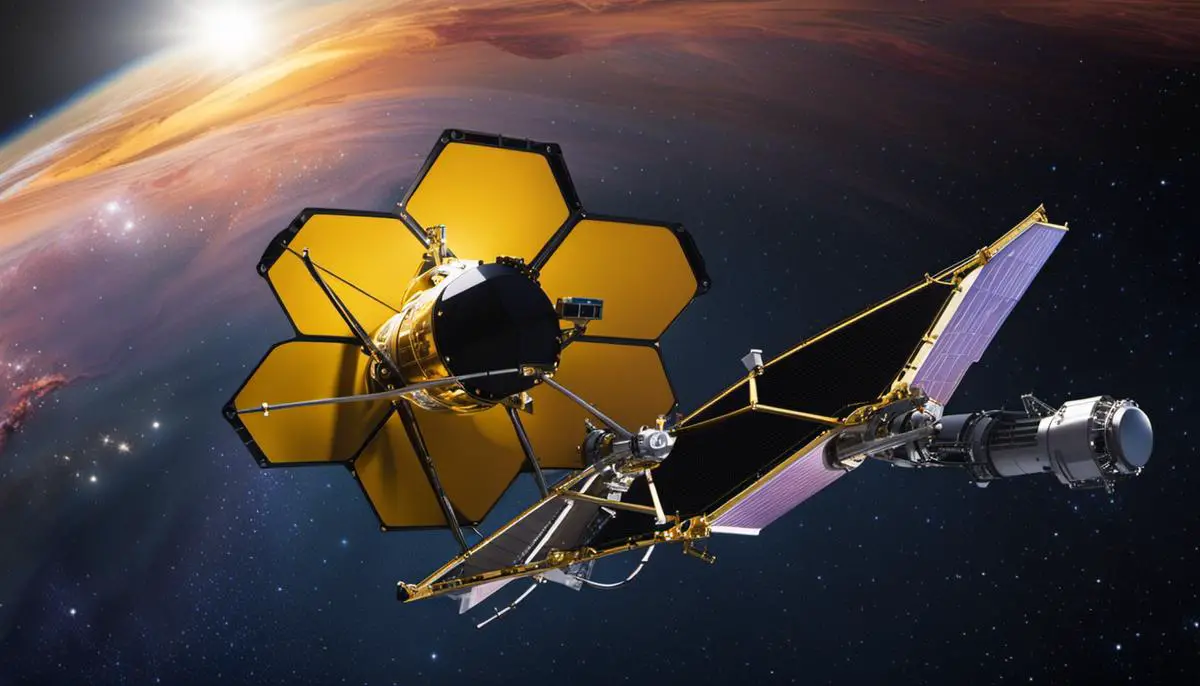
James Webb and the Future of Astronomy
The James Webb Space Telescope: A Revolutionary Tool
Representing the pinnacle of observation tools, the James Webb Space Telescope (JWST) is set to redefine our perception of the universe. It boasts a primary mirror nearly triple the size of the one on the Hubble Space Telescope, enhancing its ability to observe the universe with more granularity. JWST will take in more light, thus observing more detail. Additionally, its state-of-the-art infrared abilities aid in measuring heat radiation from celestial bodies. This will grant astronomers the power to investigate objects too faint or too far away for current telescopes.
Impacting Our Understanding of the Universe
The JWST aims to expand human knowledge beyond what has been achievable with existing space exploration tools. Its infrared sensitivity will enable it to study the earliest galaxies that formed in the universe, peer into dust clouds where stars and planetary systems are developing, and analyze the atmospheres of exoplanets for possible signs of life. Thus, the JWST is expected to considerably broaden our understanding of the universe, from understanding the planets in our solar system to unraveling the mysteries of the universe’s beginning.
Potential Discoveries and Advancements with JWST
Largely due to its innovative technologies, the JWST is anticipated to lead a variety of breakthrough discoveries and advancements in astronomy. One of its key missions includes looking back over 13.5 billion years to see the first galaxies that formed in the early universe, an accomplishment that will refine our understanding of the universe’s age, size, and rate of expansion.
Additionally, by studying the atmospheres of planets beyond our solar system, the JWST could potentially find signs of life, or at least conditions hospitable to life. With its unrivaled infrared sensitivity and high-resolution imaging, the JWST is uniquely positioned to study issues like the nature of dark matter and dark energy, and the processes governing star and planet formation.
The Dawn of a New Era in Space Exploration with James Webb
The launch of the James Webb Space Telescope (JWST) ushers in a new era of space exploration and marks a significant milestone for humankind. The deployment demonstrates the impact of technological advancements in pushing the boundaries of our knowledge about the universe and our place within it. The telescope is anticipated to outshine the Hubble Space Telescope’s contributions, creating new possibilities for research and groundbreaking discoveries.
The JWST is not merely an advancement but a leap towards an enigmatic universe that remains largely unknown or incomprehensible to us. Its capabilities to offer unprecedented cosmic views are poised to redefine our understanding of the cosmos. While it’s challenging to anticipate the exact revelations that the James Webb Space Telescope will bring about, its future contributions promise to expand our understanding of space and send us further into the untouched frontiers of the universe.
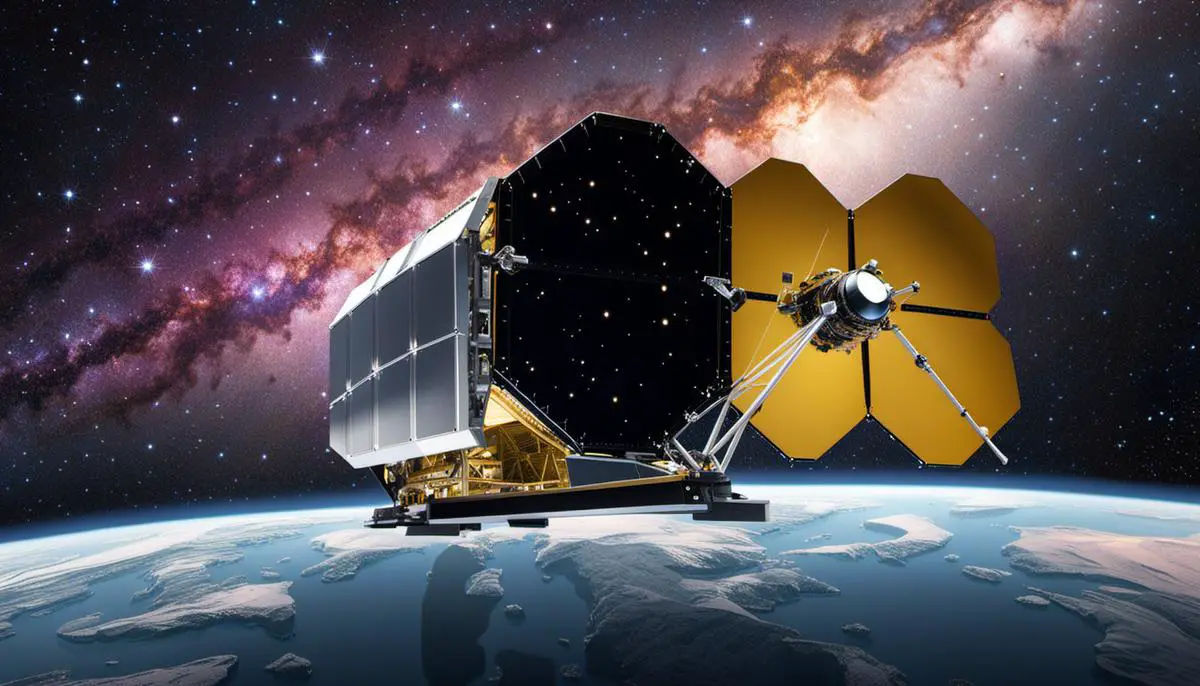
James Webb vs. Hubble – A Comparative Analysis
Introducing the Stellar Visionary: The James Webb Space Telescope
The JWST is an infrared observatory with a 6.5-meter primary mirror, named in honor of James E. Webb, NASA’s former administrator. Planned to take flight in 2021, the JWST is deemed the rightful heir to the Hubble Space Telescope, which has successfully been in action for over thirty years. It is the remarkable outcome of an international collaboration amongst three influential space agencies: NASA, the European Space Agency (ESA), and the Canadian Space Agency (CSA).
Significant Differences in Design and Objectives
In comparison to the Hubble Space Telescope, the James Webb will primarily observe the universe in the infrared, although it does have some capability in the visible and ultraviolet wavelengths. This particular design allows the JWST to observe through things like cosmic dust to see star and galaxy formation in a way that Hubble cannot. The telescope will also study galaxies that formed in the early universe, and peer through dusty clouds to see stars forming planetary systems.
Different Resolutions and Observation Ranges
The resolutions of both telescopes have significant differentiation; Hubble’s is 0.05 arcseconds in visible wavelengths while James Webb’s will be around 0.1 arcseconds. However, because of James Webb’s considerably large field of view and longer wavelength, it identifies and measures points approximately 1,000 times faster than what Hubble could handle. The JWST offers a significant upgrade in the carriage of larger scientific payloads, thus improving its observation range.
Endurance and Maintenance Considerations
Unlike the Hubble, which orbits Earth and can be serviced and repaired by astronauts, the JWST will be stationed at the second Sun-Earth Lagrange point (L2), nearly 1.5 million kilometers away. This makes it inaccessible for any repair missions. However, the site provides a stable environment for the JWST, allowing it to maintain a constant temperature and stay cool enough to detect weak infrared signals.
Broader Implications and Highlights
While Hubble has reshaped our understanding of the cosmos and where we stand in it, James Webb will advance this knowledge by giving us more insight into the distant past by looking at the early universe. The JWST will allow scientists to study the formation of galaxies and how they have evolved over the course of the universe’s history.
Moreover, the JWST with its enhanced observation capabilities will particularly give a significant push to the fields like astrobiology and astrophysics. Its advanced technology is capable of detecting potential biosignatures in the atmospheres of exoplanets, which could potentially lead to the discovery of life beyond Earth.
James Webb Space Telescope: Pioneering the Future of Space Exploration
The James Webb Space Telescope is set to redefine our capabilities in space exploration, offering groundbreaking opportunities for the investigation of celestial bodies and phenomena. Its deployment is anticipated to shed light on the most intriguing mysteries of the cosmos and humanity’s place within it, stimulating an entirely new range of captivating questions.
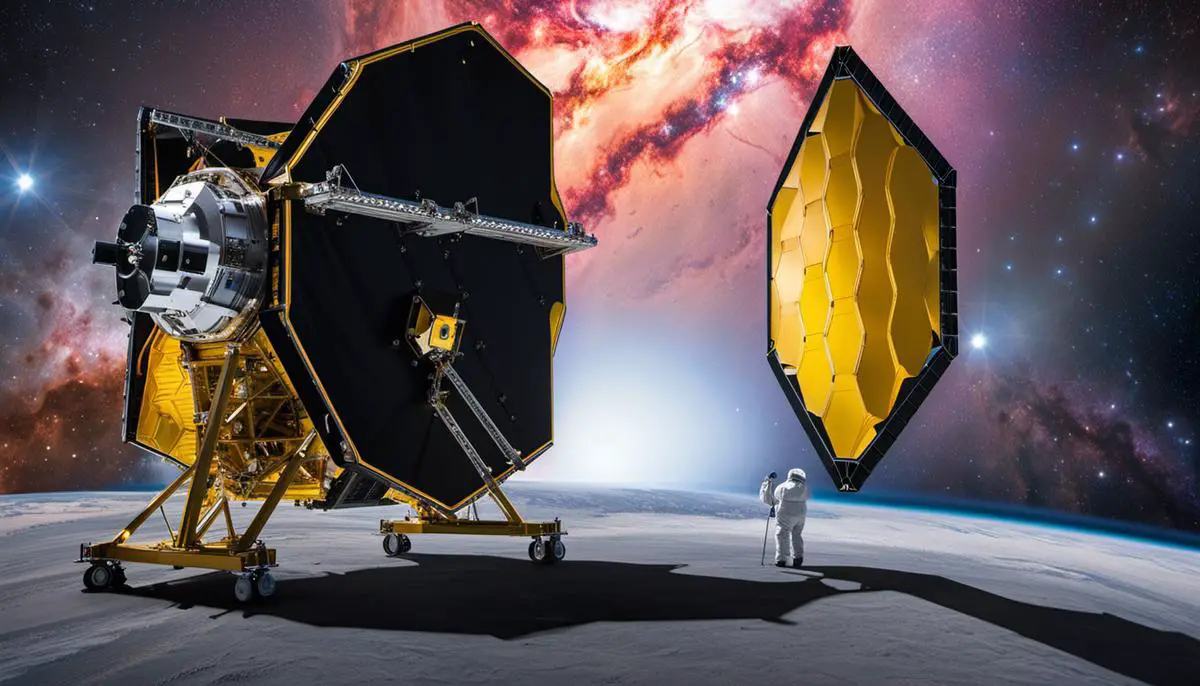
Possible Challenges and Controversies
Navigating the Challenges: JWST’s Extended Timeline and Budget Overruns
The journey of the James Webb Space Telescope (JWST) has not been without considerable obstacles, especially in terms of its budget and timeline. What started as a project with an estimated cost of roughly $1 billion, now carries a price tag almost tenfold, standing at nearly $9.7 billion. This significant surge largely stems from the intricate technological challenges inherent in devising a groundbreaking space telescope that can delve into the furthest reaches of the universe.
Furthermore, JWST’s launch timeline has also been a subject of substantial debate. Initially projected for a 2007 launch, the timeline has been repeatedly deferred due to various technical complications. This has led to a development phase extending across two decades, prompting escalating costs and stirring considerable controversy.
Technical Challenges: Overcoming Complexities in Space Exploration
The JWST has been a testing ground for many technologies that have never been used before in space exploration. This includes the intricate sunshield designed to protect the telescope’s sensitive instruments from the Sun’s heat and light, as well as the deployment and stability of its large, primary mirror.
The complex folding mechanism to package the massive 6.5-meter mirror and the sunshield for the launch adds another layer of complication. Any hitch in the unfolding of these structures in space could lead to problems that might be impossible to rectify post-launch. These technical issues have been a magnet for criticism and controversy throughout the project’s development phase.
Scientific Controversy: Restricted Access and Its Implications in the Astronomy Field
Another aspect of the JWST project that has stirred controversy is the restricted access for astronomers. Given the high operating costs, prolonged development period, and the advanced capability of the telescope, observation time on the JWST is both highly coveted and limited. As such, observation time is expected to be dominated by large, flagship missions, potentially leaving little room for smaller research projects.
The selection process for telescope time is rigorous and competitive, which could inadvertently create an inequitable environment for astronomers around the globe. As the JWST sets to cover new ground in our understanding of the universe, the restricted access to observation time poses questions about inclusivity, fairness, and the democratization of space exploration.
The James Webb Space Telescope is undoubtedly a towering symbol of human perseverance and ingenuity. However, the various challenges and controversies it has faced underline the surrounding issues that often concern large-scale, complex scientific projects. As we look forward to the pivotal discoveries JWST will make, these issues serve as important considerations for future space explorations.
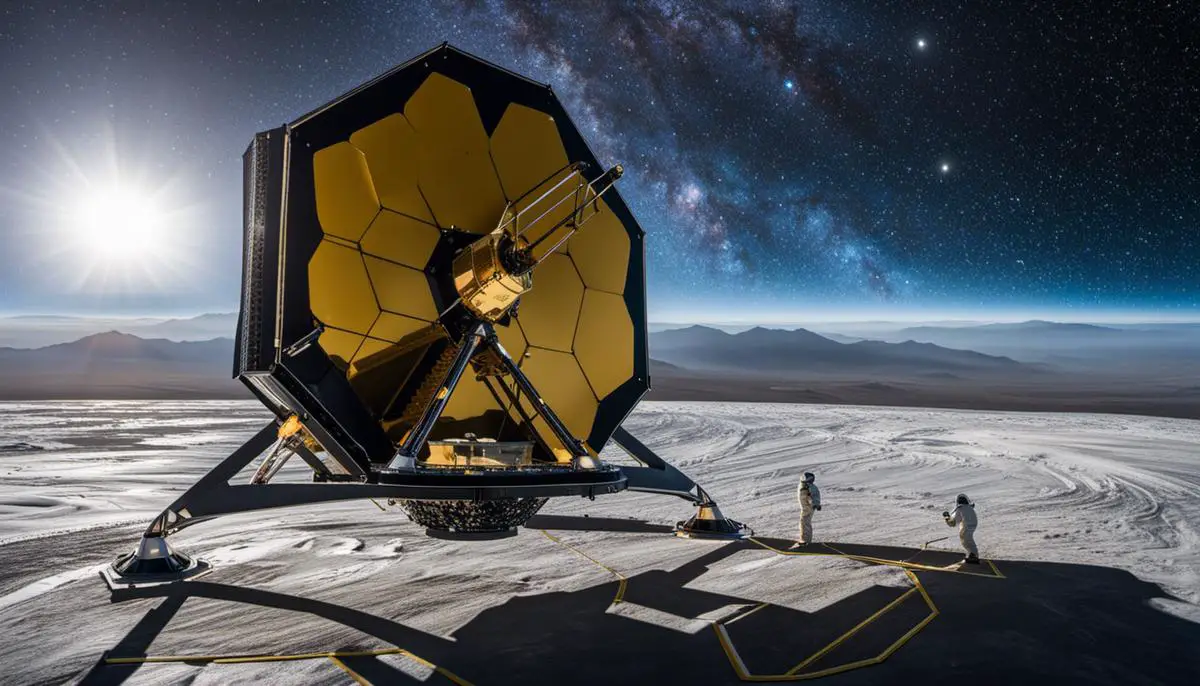
With the James Webb Space Telescope, humanity stands on the precipice of a whole new era of cosmic exploration. Despite the challenges that had beset its development journey, the promise it holds for our understanding of the universe remains undiminished. It’s worth noting that, while JWST’s capabilities dwarf those of existing telescopes, it is not aimed to render them obsolete. Instead, JWST will offer us new tools and perspectives to build on the wealth of knowledge garnered by its predecessors. The launch of the JWST is a call to arms for the scientists around the world—space is vast, mysterious; yet, within grasp. The voyage is arduous, filled with uncertainties; yet, essential. After all, the universe’s quietest whispers and loudest roars found in the light’s spectrum are waiting to narrate their timeless cosmic epics.
![]()
